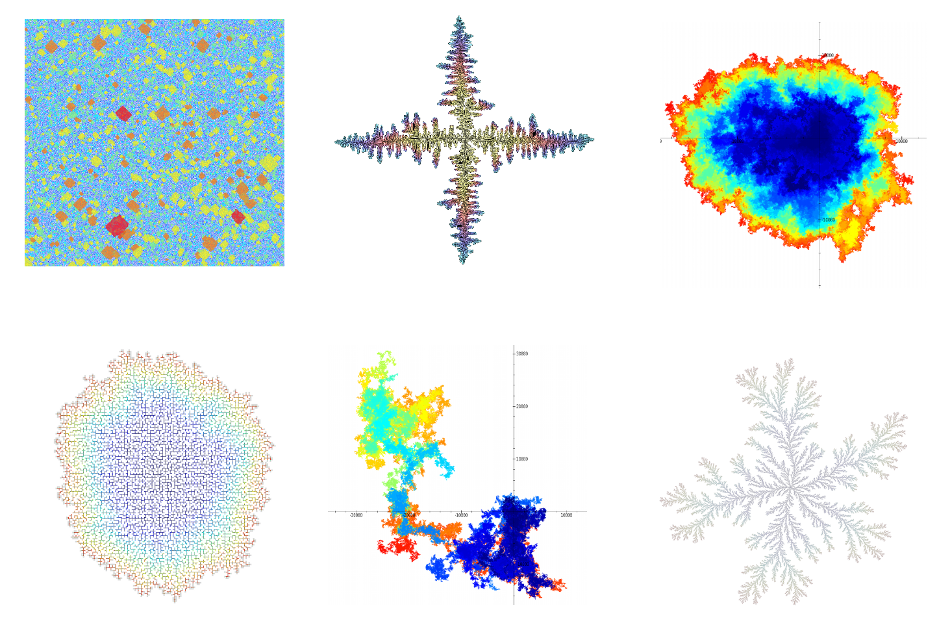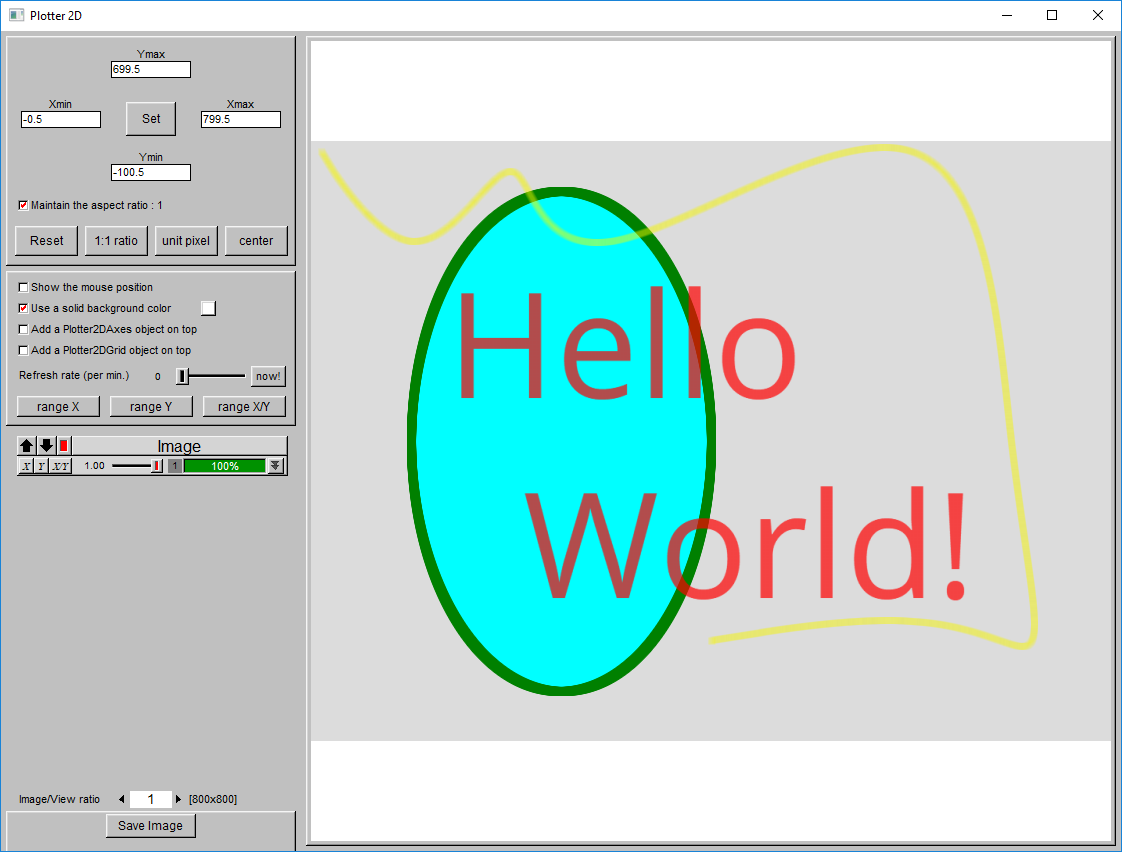- Author: Arvind Singh (mail , www)
- git repo: https://github.com/vindar/mtools
- License: GPLv3
This repository contain a collection of C++ classes I created for simulations of exotic stochastic processes and for displaying graphics. It consists of code that I accumulated over the years which I finally decided to gather inside a library (hence the sometimes incoherent naming convention that switches between camelCase and snake_case).
Using the library is pretty straightforward. Every class/function is located under the mtools namespace. The #include "mtools.hpp" directive includes all other required headers. The library itself is divided into several components:
-
randomgen/ : Implementation of some classical random number generators such as the Mersenne Twister, Xorgen... and some classes to generate specific probability distributions such as stable laws, distribution of SRW...
-
maths/ : Classes for representing rectangles, vectors, matrices, graphs, combinatorial maps and such...
-
io/ : Contains stuff related to input/output. In particular,
IBaseArchive/OBaseArchive. Classes used for serialization of objects in the spirit of boost::serialization but much simpler, without forward serialization of pointer type but with the possibility of including comments to improve the readability of the archive. Specialization for all std:container is provided. Several derived classes are defined to alter the output format of the archive (e.g. file, string...)Console. Class which displays a text console that can also log into a file. The console can be used for simple text input/output. A globalmtools::coutobject is defined which can be used as a substitute for std::cout/std::cin.LogFile. A simple class for text logging into a file.WatchWindow. Create a window which display the value of variables to spied upon in real time. It is even possible to change the values on the fly (usually a good way to crash the program). A global objectmtools::watchis defined to be used as the default spy window.- A simple parser for command line arguments...
-
containers/ : This directory contain template classes used for holding objects (in the spirit of the stl containers).
Grid_basic/Grid_factor. Template classes which simulates an infinite d-dimensional grid Z^d where each vertex of the grid holds an object of the template type. The grid is dynamically constructed when objects are read/accessed and the internal structure is similar to that of an octree with some additional refinements. The whole grid can copied and saved/read from a file. The Grid_factor version also permits 'factorization' of objects (i.e. the same object can be re-used for distinct positions in the grid). I find this class particularly useful when simulating multi-dimensional processes such as random walks, growing domains, percolation processes, interacting particle processes etc...- Other outdated container classes such as
RWtreegraph,randomurn... I plan to rewrite them from scratch at some point...
-
graphics/ : This is the biggest part of the library. First, every drawing ends up being drawn on an
Imageobject. This (huge) class defined in 'Image.hpp' represent a 2D image in RGBA32 format. The class usage is similar to CImg's image class except that the image is interlaced, making it compatible with cairo/openGL... Next, several classes are defined that enable to display interactively (mostly) anything that can be embedded in R^2. One advantage here compared to other graphic libraries is the ability to move around and zoom while still doing the calculations. The main class is thePlotter2Dclass which displays the plotter window and manages user commands. Interaction with the plotter are performed via the keyboard using the arrow keys, page up/down and other shortcuts and with the mouse (left click & drag for zooming, right click for centering and mouse wheel for zoom level). It is possible to manage options specific for each of the drawn objects, enable or disable them, choose their drawing order, their transparencies, set the refresh rate, draw an axes system, draw a grid, save the image to a file, etc... Plenty of stuffs really! Each interactive command can also be set programmatically by invoking the corresponding method. The plotter draws a superposition of all the objects inserted via the operator[] methods. In order for an object to be drawable, it must implement thePlotter2DObjinterface which is, itself, a variation of theDrawable2DObjectinterface with additional methods needed to define a drop-down plot-specific option menu. You can create you own class derived fromPlotter2DObjif you wish but, in most case, you can fall back on using one of the predefined sub-classes:Plot2DLattice: Encapsulate a two-dimensional integer (rectangular) lattice. You must provide a function which takes an integer position (i,j) and returns a color. Optionally, you can also indicate another function which takes a position and returns a CImg image associated with the site. In this case, the site images are used when zooming on a small portions of the lattice (switching between drawing modes can be done in real time using the plot drop-down menu). Check the 'OERRW_2D', 'iDLA_2D', 'eDLA_2D' or 'LERRW_2D' demos in examples/ directory to see how to use this class.Plot2DPlane: Encapsulate a 2D plane R^2. You must provide a function which takes an real-valued coordinate (x,y) and returns a color. Check the 'Mandelbrot' project for an example.Plot2DCImg: Encapsulate a CImg image. Check the 'ImageViewer' project for an example.Plot2DFun: Draw the graph of a function. Take any function of the form T f(U) where T and U are convertible to double. Several drawing options are available in the plot drop-down menu. Check the 'SRW_1D' project for an example.Plot2DArray: Encapsulate a one-dimensional C-array. Take a T* pointer and its buffer size. Type T must be convertible to double. Several options such as the interpolation method are available in the plot drop-down menu.Plot2DVector: Similar toPlot2DArraybut take an std::vector instead of a raw pointer as parameter. This permits the vector size to change even while being plotted. You can choose how changing the vector size affects plot range. Check the 'SRW_1D' project for an example.Plot2DGridandPlot2DAxes: Define an object that draws a custom grid/axes coordinate. Normally, you do not need to create instances of these classes since you can always add or remove grid/axes objects directly from the plotter.
The easiest way to create objects of the types described above is to call one of the global factory functions 'makePlot2Dxxx()'. See the documentation alongside the declarations in the header files for additional details...
- misc/ : Contains general purpose code. Some header files you might want to have a look at:
- 'timefct.hpp' : Contain methods dealing with time. In particular, class
ProgressBardisplay a progress bar window. - 'memory.hpp' : Class
SingleAllocator. A simple but very fast memory allocator. - 'metaprog.hpp' : Contain several meta-programming tricks for detecting existence of member functions/operators.
- 'error.hpp' : Contain functions and macros for dealing with errors.
- 'stringfct' : contain various functions for manipulating string. In particular, the
toString()method used to convert any object into a string.
- 'timefct.hpp' : Contain methods dealing with time. In particular, class
Information about a class or a method should be located in the corresponding header file, above its declaration. Comments are, more or less, in doxygen format (but do not try to compile the doc, it is a mess).
The sub-directory examples/ contain standalone projects demonstrating how to use the library. It consist mostly of simple simulations of stochastic processes such as interacting particle systems, percolation, DLA, interacting random walks...
For example, the following code write the traditional C greeting on an image and then display it.
#include "mtools/mtools.hpp"
using namespace mtools;
int main(int argc, char *argv[])
{
MTOOLS_SWAP_THREADS(argc,argv); // required on OSX, does nothing on Linux/Windows
cout << "Hello from the console !"; // print on mtools::cout console (saved in cout.text)
Image im(800, 600, RGBc(220,220,220)); // image of size 800x600 with a light gray background
// draw on the image
im.fill_ellipse_in_rect({ 100,400,50,550 }, RGBc::c_Cyan, false);
im.draw_ellipse_in_rect({ 100,400,50,550 }, RGBc::c_Green, true, true, 4);
im.draw_text({400, 300}, "Hello\n World!",MTOOLS_TEXT_CENTER,RGBc::c_Red.getOpacity(0.7), 200);
im.draw_cubic_spline({ {10,10},{100,100},{200,30},{300,100}, {600,10} , {700,300},
{720, 500}, {600, 480}, {400,500} }, RGBc::c_Yellow.getOpacity(0.5), true, true, true, 3);
// display the image
auto P = makePlot2DImage(im); // Encapsulate the image inside a 'plottable' object.
Plotter2D plotter; // Create a plotter object
plotter.axesObject(false); // Remove the axe system.
plotter[P]; // Add the image to the list of objects to draw.
plotter.autorangeXY(); // Set the plotter range to fit the image.
plotter.plot(); // start interactive display.
return 0;
}
The library is cross-platform. It works under Linux (GCC) and Windows (VS2015/17) and OSX (Clang/GCC) and depends on a few other libraries, mainly CImg and FLTK. The library uses recent C++ features so a (fairly) up to date compiler is required to build it. See 'INSTALL.TXT' for details on how to build the library.
Once the library is built, the python script tools/mtools-project.py can be used to created new cross-platform projects that link against mtools.
If you are looking for a nice C++ library that you can use to make simulations and create graphics, I strongly recommend that you look at Vincent Beffara's simulation library. It is very similar to mine and does pretty much the same things. If I had known about it a few years ago, I would probably now just use it and would never have written this one... In fact, while putting this library together, I borrowed the ideas of 'watch windows' and simple command-line parser from Vincent's library. There are many other neat features so go have a look at it.

